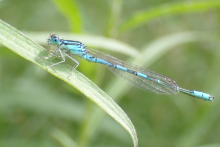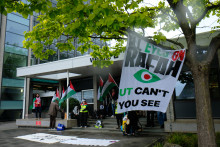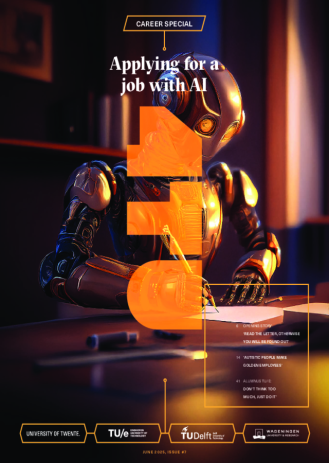Just this month, William H. Gates III gave a talk to 1,000 students at MIT, calling this a time for ‘bringing the methodologies of machine learning and modeling and rich data mining into all the hard sciences.’
And over recent years, the field of computer science is opening wide and can be helpful in many academic disciplines: ‘You can track most anything. For example, the position and movements of people, cars, animals, clouds and icebergs, as we did in our case study. We try to discover and extract previously unknown patterns.’
Icebergs in Antarctica
In one of his case studies on flock patterns, Calderon Romero set out to understand and confirm previous research on the influence of the speed and direction of the winds and ocean currents on the movement of icebergs. ‘We realized from previous research studies conducted in the UK that there is a relationship between patterns of icebergs to ocean currents and global climate.
By using remote sensing devices, we took aerial pictures and made a trajectory of the data to examine how groups of icebergs move together.’ What he discovered was the movement of icebergs is seasonally affected, which confirmed previous studies, and some of the spots where icebergs move the fastest match the location of populations of krill fish. Calderon Romero’s investigation results could aid in further and more accurate research on the species. ‘You cannot put a tracking device on the fish because they are far too small for a GPS receiver. Antarctic krill represent a multimillion dollar industry and the krill in the Northern Polar regions have already been overfished. It’s an environmental issue. The entire fishing industry has moved to the South Pole,’ added Calderon Romero.
Sharing the same path
Looking to one day return the Netherlands, Calderon Romero interviewed for a PhD position in the Faculty of Electrical Engineering, Mathematics and Computer Science at the UT. He has crossed his fingers for the chance to stay on at the university to further explore in the area of geo-profile driven social network enrichment. Instead of tracking icebergs, he now wants to follow the digital footprints made by flocks of human beings on the Internet: ‘It’s too early to say, but I hope to concentrate on discovering longer algorithm chains and use data mining to make predictions on the patterns of tourists who share common factors.’ The open position focuses on investigating online communities by interest and to carve out trajectories within a domain of activity.
For the time being
As part of the Erasmus Mundus Master’s program, part of his research project brought him over the course of 18 months to study in England, Poland and Sweden, where he found the temperatures of -20 Celsius ‘unbearable’ in the winter months. ‘This was my first time in Europe. When I return to Columbia this week, I plan to work for the time being as a volunteer researcher in the GRIAS research group who are currently investigating new applications for data mining. The research investigates finding similar patterns in women who have been diagnosed with cervical cancer.’
Read about Calderon Romero’s research at the ITC Faculty website and gain access to his full thesis:Mining moving flock patterns in large spatio-temporal datasets using a frequent pattern mining approach.
Robbin Engels

Andres Oswaldo Calderon Romero: ‘In data mining, we are very careful to use only anonymous user data and never do we try to match IDs or hack into a user’s computer account. The Internet is guarded in terms of giving out user information by having secure web pages. As researchers, we only have access to general data information and that is what we base our research on.’ Photo: Arjan Reef







